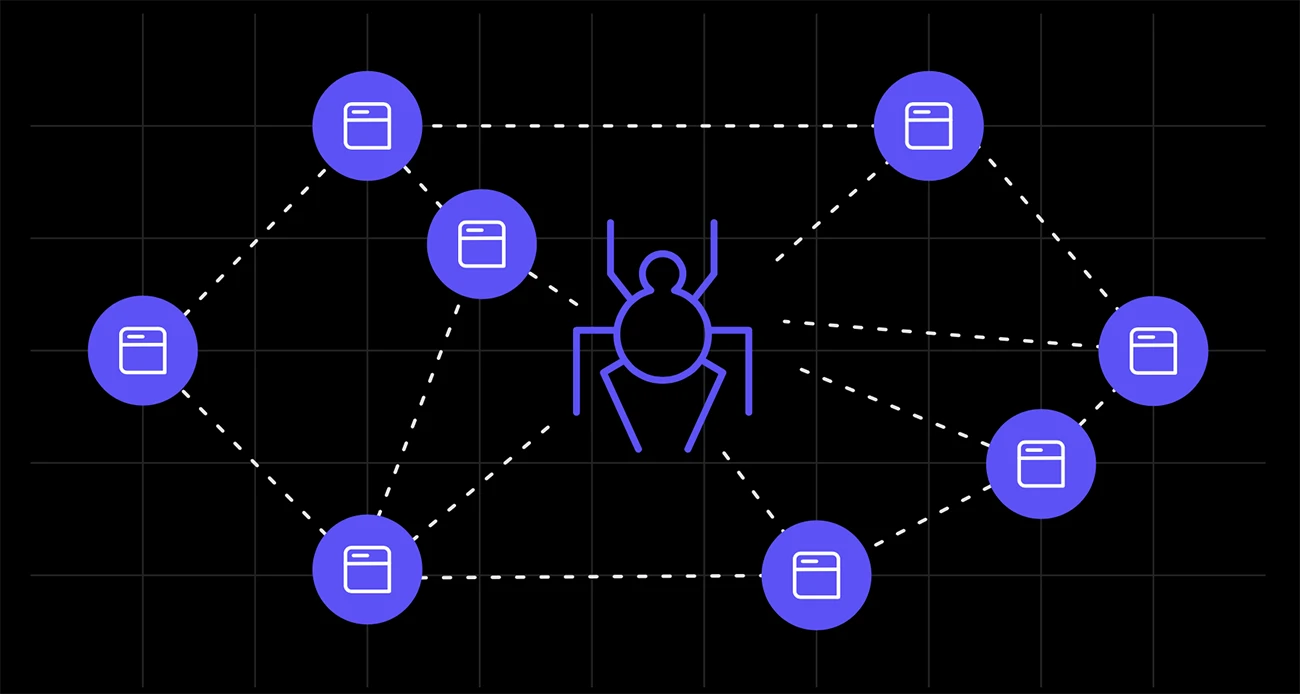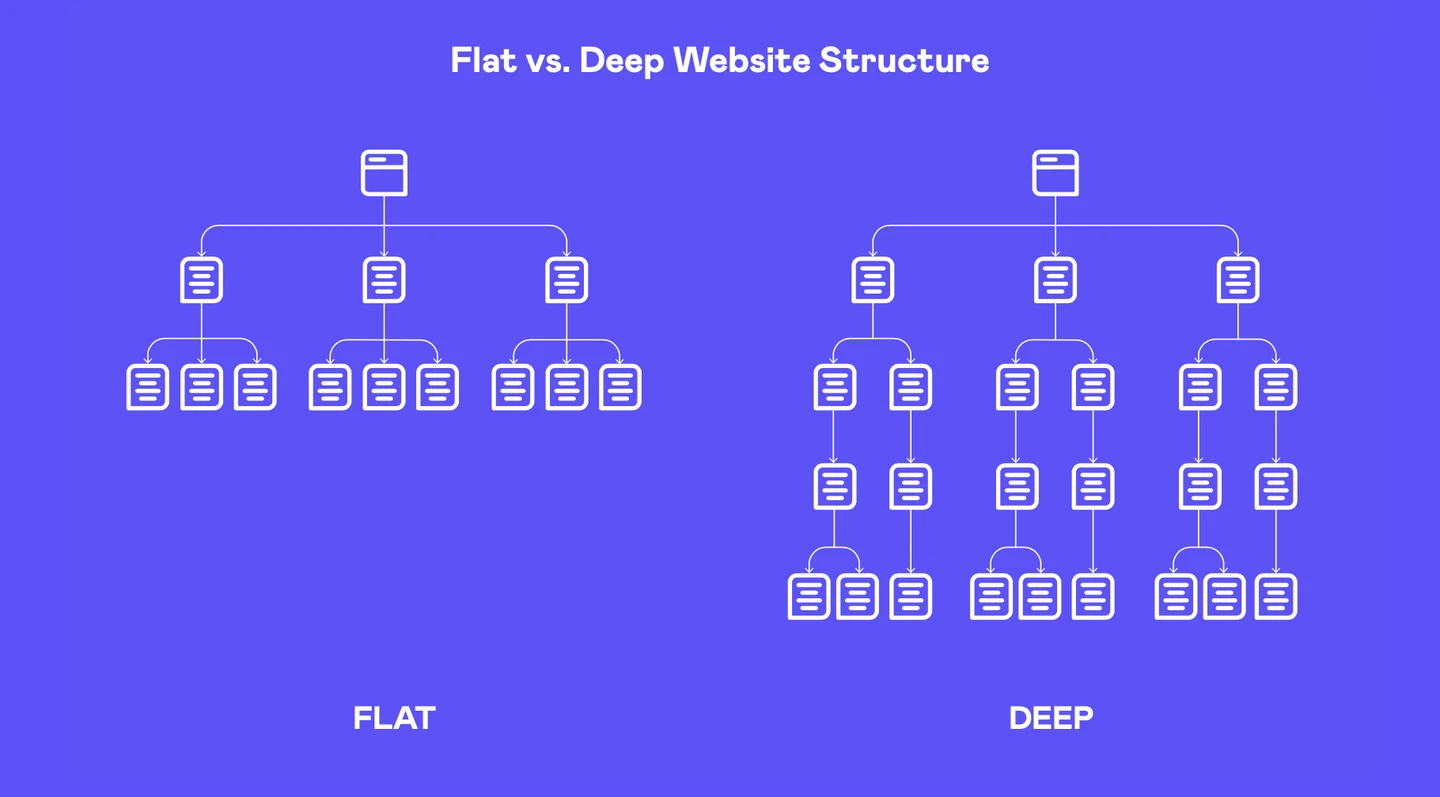Core Web Vitals
These user-centered ranking factors introduced by Google in 2020 go deep into user experience, analyzing how users interact with a page and if they get the content they expected.
You have a website, and you want it to appear at the top of Google’s search results. That’s where SEO, or search engine optimization, comes into play. But how exactly can you boost your site’s SEO?
Using so-called web crawlers (also commonly referred to as search engine bots or spiders), search engines examine hundreds of billions of pages. This process of finding out what pages exist on the web is called crawling. Once Google discovers a new page URL, it visits, or crawls, the web page to see what’s on it.

After Google finds the new web page, it tries to understand what the page is about. This process is called indexing. Google examines the content of the page, catalogs images and embedded video files, and saves this information in a large database called the Google index.
Another process worth mentioning here is ranking (or serving). When a user searches for something, Google tries to find the most relevant answer from its index. It attempts to identify the highest quality answers, taking into account things such as the user’s location, language, and device. To give an example, someone trying to find an Italian restaurant in Rome will get different results than someone typing the same query in Prague.
Save the ebook to your inbox.
Ranking factors are variables that Google uses to decide the best ordering of relevant, indexed results returned for a search query. Although there are supposedly around 200 of them, here are a few just to give you an idea of what ranking factors are:
These user-centered ranking factors introduced by Google in 2020 go deep into user experience, analyzing how users interact with a page and if they get the content they expected.
Search engines have always favored content that is useful to visitors—your content must anticipate the answers your prospects are looking for and address those topics directly.
Search algorithms examine your URLs to better understand the context of your web pages. Besides URLs, your keywords should also appear in your header tags, meta descriptions, and image descriptions.
Remember the last time you visited a website that wasn’t optimized for mobile? Probably not, right? This indicates how crucial mobile responsiveness is for SEO. You can use Google’s Mobile-Friendly Test to assess whether your site is mobile-friendly.
An internal link is any link from one of your pages leading to another page on your website. The more links lead to a page, the more important it will seem to search engines. For this reason, failing to include internal links on your site can have a detrimental impact on your SEO.
Backlinks (also “inbound links,” “incoming links,” or “one-way links”) are links from one website to a page on another website. Search engines view these backlinks as “votes” for a specific page, so pages with a high number of backlinks are generally considered more relevant and trusted by Google and other search engines.
Because users will quickly flee from websites that are slow and confusing, Google wants your website to be fast and provide a great user experience. To learn more about the performance of your page on both mobile and desktop devices, check out PageSpeed Insights.
From optimizing code and compressing images to leveraging browser caching and minimizing redirects, the tool provides valuable recommendations tailored to your specific needs. Remember, when it comes to your website's performance, every millisecond counts.
The amount of time visitors spend on your site is a good indicator of how useful they think your site is. This metric determines how long visitors spend shopping before making a purchase, how much time they spend reading articles, and so on.

An important thing to keep in mind is that Google uses mobile-first indexing now. They predominantly check and rank the mobile version of any content. Many people focus on the desktop version even though it’s much less important for SEO these days.
Michal Pecanek
SEO & Marketing Educator, AhrefsOne of the most important aspects of a website is its structure. The way you lay out your website can have a direct impact on your ranking and the amount of traffic you receive. Below are some easy steps to creating a solid and simple website structure that can help improve your search engine optimization.
According to IBM’s Content Designer Will Fanguy, “a proper website structure helps the site’s visitors find information easily through consistency.” He also says that the ideal website structure resembles a pyramid, consisting of a home page, categories, sub-categories, and individual pages and articles.
You can learn a lot by taking a look at your competitors’ websites. When you visit them, pay attention to how they’re organized—how many main categories there are and how they are connected. Examine the most popular sections and pages and decide whether it would make sense to add similar ones to your website.

You should prepare a comprehensive keyword list for your website. SE Ranking suggests using tools like Google Keyword Planner together with Google Trends and visiting relevant forums to expand the list of keywords. Keep in mind that it’s essential to incorporate queries of different search volumes in order to address both general inquiries and very specific intents.
After you’ve collected a lot of keywords, you can filter out the irrelevant ones—those that don’t suit your website. Then classify the rest based on a criterion that works best for you: intent, search volume, difficulty, or another, and match groups of keywords with different sections and pages you’re going to have on your website.

Plan your website structure by writing down the major sections and then visualizing the hierarchy of each section using one of many visualization tools like Coggle or MindMeister. In addition, you should make sure:
Internal links are completely under your control. When you link within your own site, you can direct visitors straight to the most relevant pages. If you have lots of related content on your blog or web pages, internal linking allows you to connect them together—this is especially important on websites with lots of content. It’s common for users to get lost on large sites, so internal linking enables users to locate specific pages more easily and reduces this problem.

A good URL is descriptive but short and clean and includes keywords that are relevant to the page content (e.g., http://company.com/blog/7-seo-optimization-tips). Not only does creating SEO-friendly URLs help search engines find your content more easily, but it also improves your user experience.

Accessibility is the word that describes making your website available to as many people as possible. It’s about making sure anyone can use your website, not just those with the latest technology or a certain level of skill.
The problem with this is that it’s very hard to get right. Designing a website that’s accessible to everyone is actually very difficult because there are so many different factors involved—from the web browser you use to your device. However, there are certain things you can do to make sure your website is more accessible:

Get your complimentary copy of Best Ways to Improve SEO Using Your CMS to:

Kontent.ai Team
Start your journey with Kontent.ai. We’ll show you how to achieve an unparalleled return on your content.